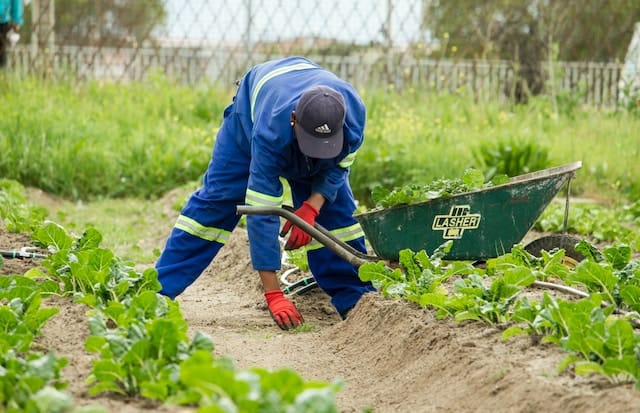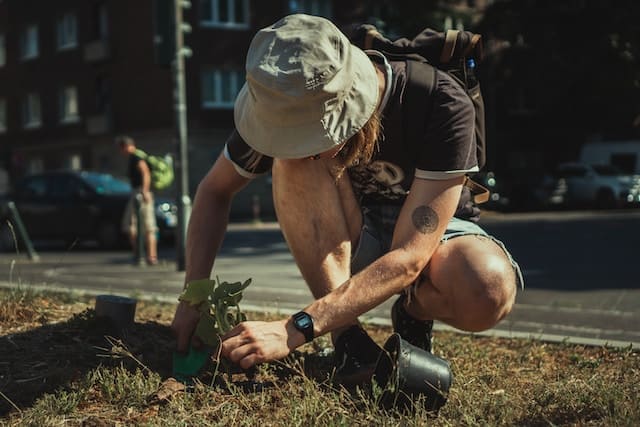Planting trees on an easement can be a tricky situation for homeowners. Easements are legal designations that allow individuals or entities to use portions of your property for specific purposes, such as for drainage or utility access. While the homeowner still owns the land, the easement holder has the right to use it.
The question of whether you can plant trees on an easement depends on the purpose of the easement and whether planting trees would substantially impair the rights of the easement holder. In most cases, planting trees on an easement is allowed as long as it does not interfere with the purpose of the easement.
However, without seeing the easement, it can be challenging to provide a definitive answer.
Homeowners should be aware of the legal implications and practical considerations of planting trees on an easement. This article will explore the benefits and drawbacks of planting trees on an easement, the legal issues involved, and what homeowners should consider before planting trees.
Key Takeaways
- Homeowners can plant trees on an easement as long as it does not interfere with the purpose of the easement.
- Before planting trees, homeowners should understand the legal implications and practical considerations of planting on an easement.
- Benefits of planting trees on an easement include privacy and aesthetic appeal, while drawbacks include maintenance and liability concerns.
Check out these other top posts in this category:
- Can You Plant Swiss Chard With Tomatoes?
- Can You Plant Sunflower Seeds from Bird Food?
- Can You Plant Pothos and Wandering Jew Together?
Understanding Easements

An easement is a legal agreement that allows a person or entity to use a portion of someone else’s property for a specific purpose. Typically, easements are granted to utility companies, municipalities, or other public entities to allow them to access and maintain infrastructure such as power lines, water mains, or sewer lines.
Easements can also be granted to private individuals or organizations for specific purposes such as access to a driveway or a right of way to a beach.
Easements are usually documented in property deeds or other legal documents, and the terms of the agreement are typically outlined in these documents. Property owners should review these documents carefully to understand the scope of the easement and any restrictions or limitations that may be in place.
It’s important to note that easements do not transfer ownership of the property to the entity that is granted the easement. The property owner retains ownership of the land, but is restricted in their ability to use it in certain ways.
For example, if a utility company is granted an easement to run power lines through a property, the property owner cannot build a structure or plant trees in the area covered by the easement.
Property owners should also be aware that easements can be informational or prescriptive. Informational easements simply provide notice of an existing right, while prescriptive easements are granted after a certain period of use.
In some cases, a property owner may not even be aware that an easement exists until they attempt to use the property in a way that is restricted by the easement.
Legal Implications of Planting Trees on an Easement
Planting trees on an easement can have legal implications. It is important to understand the rights and limitations of the easement before planting trees. In this section, we will discuss the legal implications of planting trees on an easement.
1. Interference with Easement
Planting trees on an easement may interfere with the use of the easement. The easement holder has the right to use the easement for its intended purpose. If the trees interfere with the use of the easement, the easement holder may have a claim for interference. In some cases, the easement holder may be entitled to remove the trees.
2. Trespass and Claims
Planting trees on an easement may also result in a claim for trespass. If the trees interfere with the use of the easement, the easement holder may claim that the trees are trespassing on the easement. The property owner may be liable for damages caused by the trespass.
3. Eminent Domain and Utility Easements
In some cases, the government may exercise its power of eminent domain to take the property for public use. If the property is subject to a utility easement, the government may take the property subject to the easement. The property owner may be entitled to compensation for the taking, but the compensation may be reduced by the value of the easement.
Utility easements give utility companies the right to access private property for the good of the community. Planting trees on a utility easement may interfere with the utility company’s ability to access the property. The property owner may be liable for damages caused by the interference.
Practical Considerations When Planting Trees on an Easement

Maintenance and Cost
Planting trees on an easement comes with certain responsibilities. The owner of the property has the obligation to maintain the trees and shrubs and ensure they do not block access to the easement. This includes regular pruning, trimming, and removal of dead trees or shrubs. The cost of maintenance is also the responsibility of the property owner.
In some cases, the electric company or other utility companies may warrant the right to access the easement for maintenance purposes. It is important to check with the local authorities and utility companies to understand the maintenance obligations and costs associated with planting trees on an easement.
Potential Damage to Infrastructure
Planting trees on an easement can result in potential damage to infrastructure such as buried pipes, sewer lines, and electrical cables. The roots of trees and shrubs can grow and damage the infrastructure, causing costly repairs. It is important to select the right type of tree or shrub that will not cause damage to the infrastructure.
Before planting any trees or shrubs, it is recommended to consult with the local authorities and utility companies to understand the potential damage to infrastructure and the consequences of such damage.
Tree and Shrub Selection
Selecting the right type of tree or shrub is critical when planting on an easement. Trees with aggressive root systems should be avoided as they can cause damage to infrastructure. It is recommended to select trees and shrubs that have shallow root systems and are not prone to growing large logs.
In addition, it is important to select trees and shrubs that will not block access to the easement or obstruct the view of drivers or pedestrians. It is recommended to plant trees and shrubs at least 5 meters away from the edge of the easement to ensure they do not cause any obstruction.
Benefits and Drawbacks of Planting Trees on an Easement

Planting trees on an easement can have both benefits and drawbacks. Here are some of the most important factors to consider:
Benefits
- Aesthetics: Trees can improve the view and aesthetic appeal of the property, making it more attractive to potential buyers or visitors.
- Environmental benefits: Trees absorb carbon dioxide, reduce air pollution, and provide shade, which can help reduce energy consumption and costs.
- Privacy: Trees can provide a natural barrier and increased privacy for the property owner.
- Property value: Well-maintained trees can add value to the property and increase its resale value.
Drawbacks
- Maintenance: Trees require regular maintenance, including pruning, watering, and fertilizing. This can be time-consuming and expensive.
- Interference with utilities: Planting trees on an easement can interfere with utility lines and cause damage to electrical, water, or gas lines. This can lead to costly repairs and safety hazards.
- Legal issues: Planting trees on an easement can violate local laws and regulations, leading to fines or legal action. Property owners should always check with local authorities before planting trees on an easement.
- View obstruction: Trees planted on an easement can obstruct views and cause disputes between neighbors.
Frequently Asked Questions
Who is responsible for maintaining trees on an easement?
The responsibility for maintaining trees on an easement depends on the terms of the easement agreement. In most cases, the property owner is responsible for maintaining the trees on their property, including those on the easement.
However, if the easement agreement specifies that the easement holder is responsible for maintaining the trees, then they would be responsible.
What are the restrictions for planting on a right-of-way?
Right-of-way areas are typically owned by the government or utility companies and are used for public infrastructure such as roads, sidewalks, and utility lines.
Planting trees on a right-of-way can interfere with this infrastructure and may be prohibited. It is important to check with the local government or utility company to determine what restrictions are in place before planting on a right-of-way.
Can planting trees on a drainage easement cause issues?
Planting trees on a drainage easement can cause issues if the roots of the trees grow into the drainage system and block the flow of water. This can lead to flooding and other water-related problems.
It is important to check with the local government or utility company to determine what restrictions are in place before planting on a drainage easement.
Are there any regulations for planting in a utility easement?
Utility easements are typically owned by utility companies and are used for utility infrastructure such as power lines, gas lines, and water lines. Planting trees in a utility easement can interfere with this infrastructure and may be prohibited.
It is important to check with the utility company to determine what regulations are in place before planting in a utility easement.
What is the recommended distance to plant trees from property lines?
The recommended distance to plant trees from property lines varies depending on the species of the tree. Generally, it is recommended to plant trees at least 10 feet away from property lines to avoid any potential conflicts with neighbors.
However, it is important to check with the local government or utility company to determine what regulations are in place before planting.
What are the consequences of planting on an easement without permission?
Planting on an easement without permission can result in legal action being taken against the property owner. The easement holder may request that the trees be removed, and the property owner may be required to pay for any damages caused by the trees.
It is important to obtain permission before planting on an easement to avoid any potential legal issues.

Hey, I’m Lisa and I’ve been an avid gardener for over 30 years. I love writing, talking and living in the garden! Feel free to connect with me on my socials below


